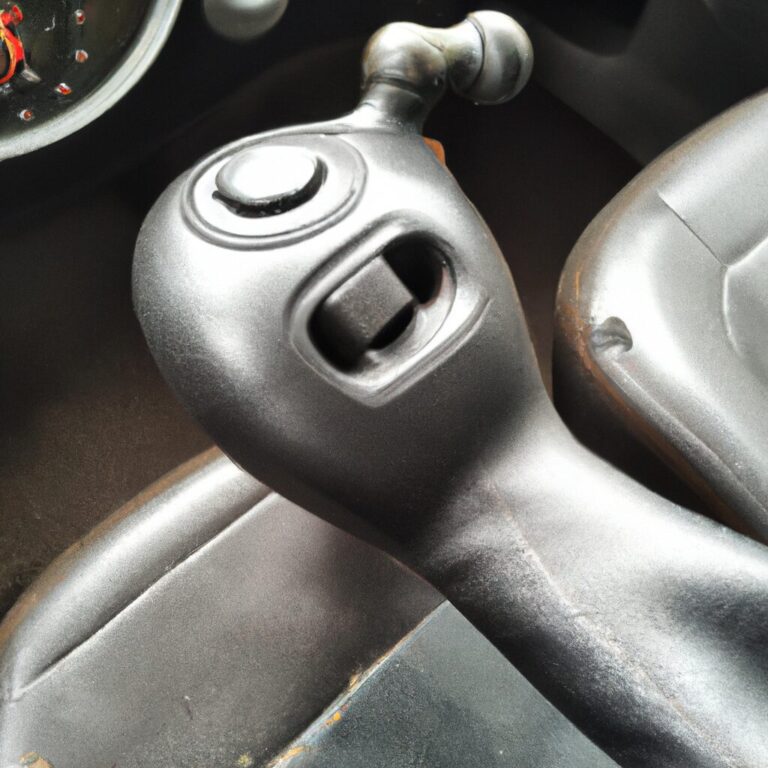how to bypass limp mode
Introduction
Limp mode is a safety feature in modern cars that limits the engine’s power output to protect it from further damage. It can be triggered by a variety of issues, such as a faulty sensor or a low coolant level. If your car has gone into limp mode, you may be wondering how to bypass it. Fortunately, there are a few steps you can take to get your car back up and running. In this guide, we’ll discuss how to bypass limp mode and get your car back on the road.
What is Limp Mode and How Can You Bypass It?
Limp mode is a safety feature found in many modern vehicles that is designed to protect the engine from further damage when a fault is detected. When a fault is detected, the vehicle will enter limp mode, which limits the power output of the engine and prevents it from reaching its full potential. This is done to prevent further damage to the engine and other components.
Bypassing limp mode can be done in a few different ways. The first is to reset the fault codes that triggered the limp mode. This can be done by using a diagnostic tool to read the fault codes and then resetting them. Another way to bypass limp mode is to replace the faulty component that triggered the limp mode. This could be a faulty sensor, a faulty fuel injector, or any other component that could be causing the fault. Finally, if the fault is not easily identifiable, it may be necessary to take the vehicle to a qualified mechanic for further diagnosis and repair.
In any case, it is important to identify and address the underlying cause of the limp mode before attempting to bypass it. This will ensure that the vehicle is safe to drive and that the fault does not cause further damage.
How to Diagnose and Troubleshoot Limp Mode
Limp mode is a safety feature found in many modern vehicles that is designed to protect the engine from damage. When the vehicle enters limp mode, the engine’s power output is reduced, and the vehicle may be unable to reach its normal top speed. Diagnosing and troubleshooting limp mode can be a difficult task, but with the right knowledge and tools, it can be done.
The first step in diagnosing limp mode is to check the vehicle’s diagnostic codes. These codes can be accessed through the vehicle’s onboard diagnostic system, or through a scan tool. The codes will indicate what system or component is causing the limp mode.
Once the cause of the limp mode has been identified, the next step is to troubleshoot the issue. This may involve checking the wiring and connections of the affected system or component, as well as replacing any faulty parts. It is important to ensure that all components are in good working order before attempting to reset the limp mode.
If the limp mode is caused by a faulty sensor, it may be necessary to replace the sensor. If the limp mode is caused by a faulty fuel injector, it may be necessary to replace the injector. In some cases, the limp mode may be caused by a faulty ECU, in which case it may be necessary to replace the ECU.
Once the cause of the limp mode has been identified and the necessary repairs have been made, the limp mode can be reset. This can be done by disconnecting the battery for a few minutes, or by using a scan tool to reset the limp mode.
In some cases, limp mode may be caused by a problem with the vehicle’s transmission. If this is the case, it may be necessary to have the transmission serviced or replaced.
By following these steps, limp mode can be diagnosed and troubleshot. It is important to remember that limp mode is a safety feature, and should not be ignored. If the limp mode persists, it is important to have the vehicle inspected by a qualified mechanic.
Understanding the Causes of Limp Mode and How to Avoid It
Limp mode is a safety feature found in many modern vehicles that is designed to protect the engine from damage. When the vehicle enters limp mode, the engine’s power output is reduced to a minimum, allowing the driver to safely get to a service station for repairs. While limp mode is a useful feature, it can be frustrating and inconvenient for drivers. Understanding the causes of limp mode and how to avoid it can help drivers prevent this issue from occurring.
The most common cause of limp mode is a problem with the vehicle’s sensors. These sensors measure the performance of the engine and other components, and if they detect an issue, they will trigger limp mode. Common issues that can cause limp mode include a faulty mass airflow sensor, a faulty throttle position sensor, a faulty oxygen sensor, or a faulty camshaft position sensor.
Another common cause of limp mode is a problem with the vehicle’s fuel system. If the fuel pressure is too low, the engine will not be able to generate enough power to operate properly, and limp mode will be triggered. This can be caused by a faulty fuel pump, a clogged fuel filter, or a leak in the fuel system.
Finally, limp mode can be caused by a problem with the vehicle’s exhaust system. If the exhaust system is blocked or restricted, the engine will not be able to expel exhaust gases properly, and limp mode will be triggered. This can be caused by a clogged catalytic converter, a faulty exhaust manifold, or a leak in the exhaust system.
Fortunately, there are several steps drivers can take to avoid limp mode. First, drivers should ensure that their vehicle is regularly serviced and that all sensors and components are in good working order. This will help to ensure that any potential issues are identified and addressed before they can cause limp mode.
Second, drivers should ensure that their vehicle’s fuel system is in good condition. This includes checking the fuel filter and fuel pressure regularly, and replacing any worn or damaged components.
Finally, drivers should ensure that their vehicle’s exhaust system is in good condition. This includes checking the catalytic converter and exhaust manifold regularly, and replacing any worn or damaged components.
By understanding the causes of limp mode and taking the necessary steps to avoid it, drivers can help ensure that their vehicle remains in good working order and that they can avoid the inconvenience of limp mode.
How to Reset Your Vehicle After Experiencing Limp Mode
If your vehicle has experienced limp mode, it is important to reset it in order to restore its normal performance. Limp mode is a safety feature that is designed to limit the power of the engine in order to protect it from further damage. Resetting your vehicle after experiencing limp mode is a relatively simple process that can be done in a few steps.
The first step is to turn off the engine and allow it to cool down. This is important because the engine may be running hot due to the limp mode. Once the engine has cooled down, you can then disconnect the battery for a few minutes. This will reset the vehicle’s computer and clear any stored codes that may have been triggered by the limp mode.
Once the battery has been disconnected, you can then reconnect it and start the engine. If the engine starts without any issues, you can then take it for a test drive. During the test drive, pay close attention to the performance of the vehicle and make sure that it is running smoothly. If the vehicle is still experiencing any issues, you may need to take it to a mechanic for further diagnosis.
By following these steps, you should be able to reset your vehicle after experiencing limp mode and restore its normal performance. It is important to remember that limp mode is a safety feature and should not be ignored. If you experience limp mode again, it is best to take your vehicle to a mechanic for further diagnosis.
How to Upgrade Your Vehicle’s Computer to Avoid Limp Mode
If your vehicle is experiencing limp mode, it is likely due to an issue with the vehicle’s computer. Limp mode is a safety feature that limits the power of the engine to prevent further damage. It is important to address the issue as soon as possible to avoid further damage to the engine.
One way to address the issue is to upgrade your vehicle’s computer. This can be done by purchasing a new computer or by having a professional upgrade the existing computer. Upgrading the computer can help to improve the performance of the engine and prevent limp mode from occurring.
When purchasing a new computer, it is important to make sure that it is compatible with your vehicle. You should also make sure that the computer is designed for the type of engine that is in your vehicle. It is also important to make sure that the computer is designed for the type of fuel that your vehicle uses.
If you choose to have a professional upgrade your vehicle’s computer, they will be able to assess the issue and determine the best course of action. They will also be able to install the new computer and make sure that it is properly configured.
Upgrading your vehicle’s computer can help to improve the performance of the engine and prevent limp mode from occurring. It is important to make sure that the computer is compatible with your vehicle and that it is designed for the type of engine and fuel that your vehicle uses. Having a professional upgrade the computer can help to ensure that the job is done correctly and that the computer is properly configured.
How to Modify Your Vehicle’s ECU to Bypass Limp Mode
Limp mode is a safety feature built into your vehicle’s engine control unit (ECU) that limits the power output of your engine when it detects a problem. This is done to protect the engine from further damage. However, if you want to bypass limp mode, you can modify your vehicle’s ECU to do so.
Before attempting to modify your ECU, it is important to understand the risks involved. Modifying your ECU can cause serious damage to your engine if done incorrectly. It is also important to note that bypassing limp mode may void your vehicle’s warranty.
The first step in modifying your ECU is to purchase an ECU tuning device. This device will allow you to adjust the settings of your ECU to bypass limp mode. Once you have the device, you will need to connect it to your vehicle’s OBD-II port. This port is usually located under the dashboard.
Once the device is connected, you will need to access the ECU’s software. This can be done by downloading the appropriate software from the manufacturer’s website. Once the software is installed, you will need to adjust the settings of the ECU to bypass limp mode. This can be done by changing the fuel and ignition maps, as well as the boost pressure settings.
Once the settings have been adjusted, you will need to save the changes and then disconnect the device from the OBD-II port. After this, you should be able to start your vehicle and test the new settings. If everything is working correctly, you should be able to bypass limp mode.
Modifying your vehicle’s ECU to bypass limp mode can be a risky endeavor. It is important to understand the risks involved and to take all necessary precautions. If done correctly, however, it can be a great way to increase the performance of your vehicle.
How to Install a Performance Chip to Bypass Limp Mode
Installing a performance chip is a great way to bypass limp mode and increase the performance of your vehicle. Limp mode is a safety feature that is designed to limit the power of your engine if it detects a problem. Bypassing limp mode can help you get the most out of your vehicle, but it is important to understand the risks associated with this type of modification.
Before you begin, it is important to make sure that you have the right performance chip for your vehicle. You should consult your vehicle’s manual or contact a professional to ensure that you are purchasing the correct chip. Once you have the correct chip, you can begin the installation process.
The first step is to locate the engine control unit (ECU) in your vehicle. This is typically located in the engine bay, but the exact location may vary depending on the make and model of your vehicle. Once you have located the ECU, you can begin the installation process.
The next step is to disconnect the negative battery cable. This will prevent any electrical damage to your vehicle during the installation process. Once the cable is disconnected, you can remove the ECU from its mounting bracket.
Once the ECU is removed, you can install the performance chip. This is typically done by connecting the chip to the ECU’s wiring harness. Make sure that all of the connections are secure before you re-install the ECU.
Once the chip is installed, you can reconnect the negative battery cable and start your vehicle. The performance chip should now be active and you should be able to bypass limp mode.
It is important to note that bypassing limp mode can put additional strain on your engine and other components. It is important to monitor your vehicle’s performance and make sure that it is running properly. If you experience any issues, it is important to have your vehicle inspected by a professional.
Installing a performance chip is a great way to bypass limp mode and increase the performance of your vehicle. However, it is important to understand the risks associated with this type of modification and make sure that you are taking the necessary precautions.
How to Install a Performance Exhaust System to Bypass Limp Mode
Installing a performance exhaust system is a great way to improve the performance of your vehicle. However, it can also cause your vehicle to enter “limp mode”, which is a safety feature that limits the power of your engine to protect it from damage. Fortunately, there are steps you can take to bypass limp mode and enjoy the full benefits of your performance exhaust system.
The first step is to purchase a performance exhaust system that is designed to work with your vehicle. Make sure to check the specifications of the exhaust system to ensure it is compatible with your vehicle. Once you have the exhaust system, you will need to install it. This process will vary depending on the type of exhaust system you have purchased, so make sure to follow the instructions provided by the manufacturer.
Once the exhaust system is installed, you will need to adjust the settings on your vehicle’s computer. This can be done by accessing the diagnostic port on your vehicle and using a scan tool to adjust the settings. You will need to adjust the settings to ensure that the exhaust system is working properly and that the vehicle is not entering limp mode.
Finally, you will need to test the exhaust system to make sure it is working properly. Start the engine and let it idle for a few minutes. If the engine is running smoothly and there are no signs of limp mode, then the exhaust system is working properly.
By following these steps, you can install a performance exhaust system and bypass limp mode. This will allow you to enjoy the full benefits of your performance exhaust system without having to worry about damaging your vehicle.
Q&A
1. What is limp mode?
Limp mode is a safety feature found in modern vehicles that limits the performance of the engine in order to protect it from damage. It is usually triggered when the vehicle detects a problem with one of its systems.
2. What causes limp mode?
Limp mode is usually triggered when the vehicle detects a problem with one of its systems, such as an engine misfire, low oil pressure, or a faulty sensor.
3. How do I know if my car is in limp mode?
If your car is in limp mode, you may notice a decrease in engine power, a check engine light, and/or a warning message on the dashboard.
4. How do I reset limp mode?
The best way to reset limp mode is to address the underlying issue that caused it in the first place. This may involve replacing a faulty part or resetting the vehicle’s computer.
5. Can I bypass limp mode?
It is not recommended to bypass limp mode as it is a safety feature designed to protect your vehicle from damage.
6. Is it safe to drive in limp mode?
It is generally safe to drive in limp mode, but it is not recommended as it can cause further damage to your vehicle.
7. How can I prevent limp mode?
The best way to prevent limp mode is to regularly maintain your vehicle and address any issues that arise as soon as possible.
8. What should I do if my car is in limp mode?
If your car is in limp mode, the best thing to do is to address the underlying issue that caused it in the first place. This may involve replacing a faulty part or resetting the vehicle’s computer.
Conclusion
Bypassing limp mode can be done by identifying the cause of the issue and addressing it. This can be done by checking the vehicle’s diagnostic codes, inspecting the fuel system, and replacing any faulty parts. Additionally, it is important to ensure that the vehicle is properly maintained and serviced to prevent limp mode from occurring in the future.



